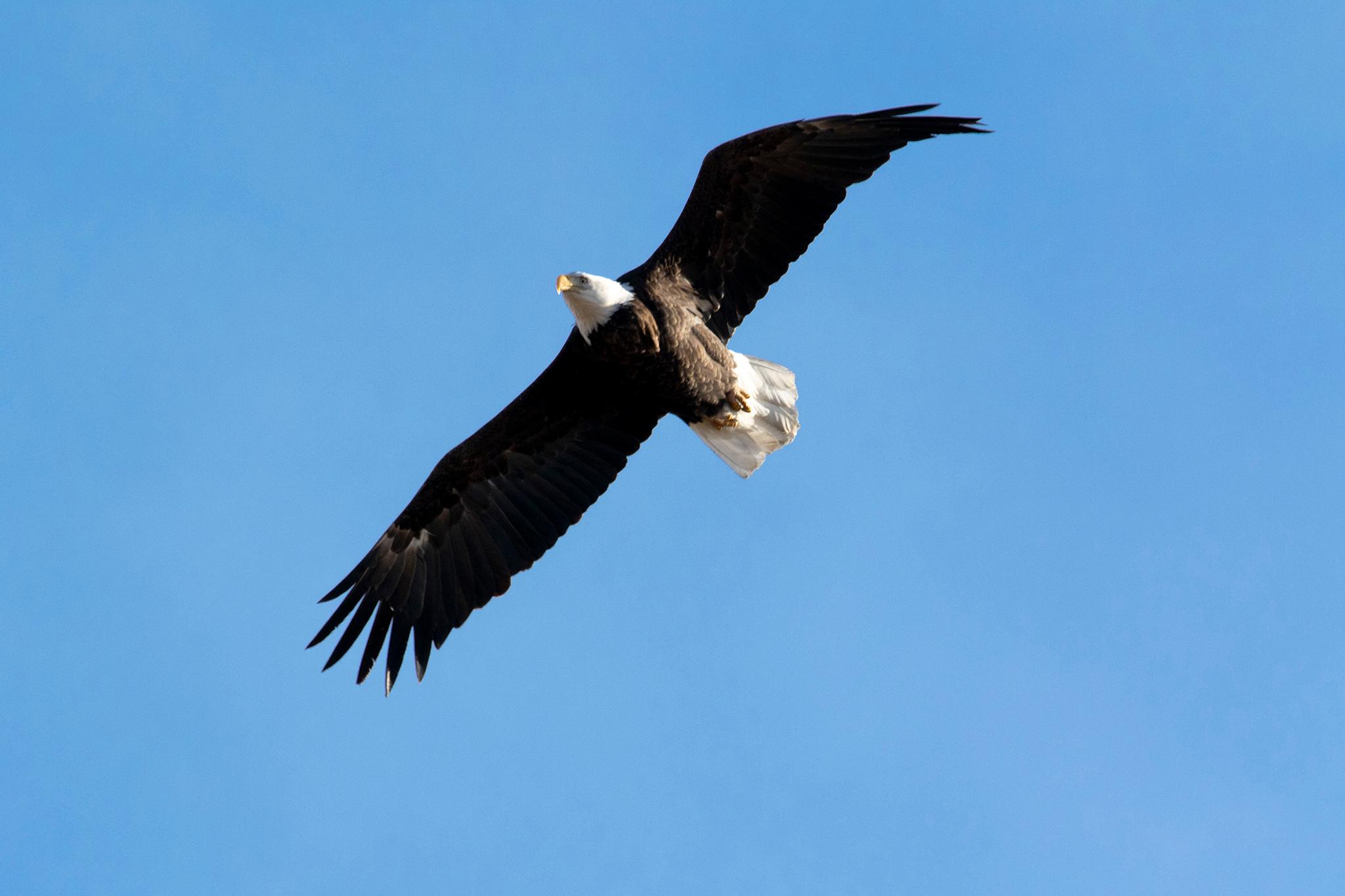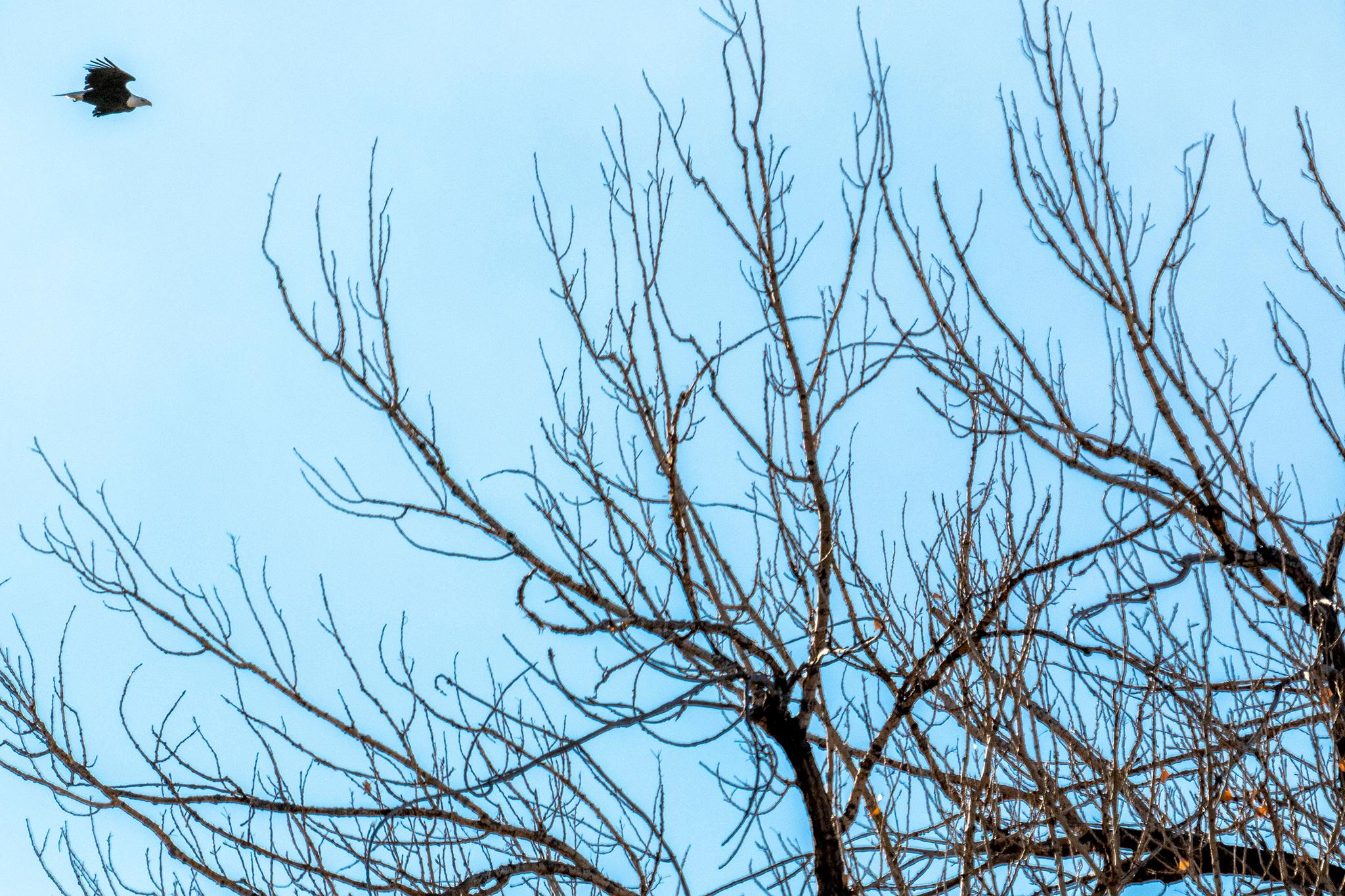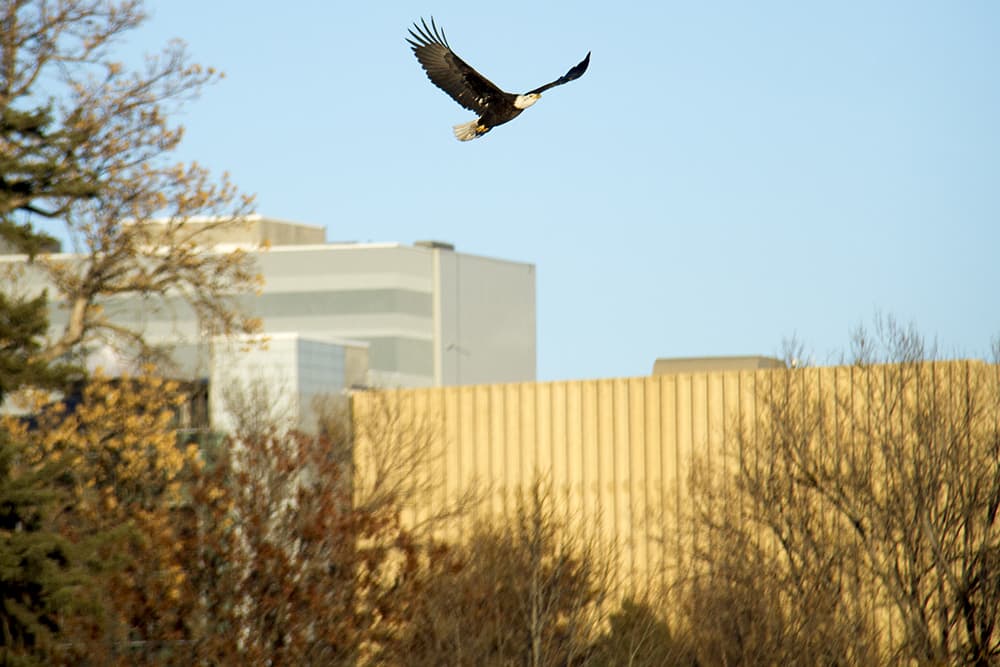I did this thing on road trips as a kid where I would count out loud every "hawk" I saw while my dad drove us up and down I-95. The name of the bird is in quotes because I did not discriminate against crows and ravens. They padded my count, which did not start again each road trip but picked up where the last one left off, culminating in my own mental raptor preserve.
Yes, it was a preserve built on lies, but the point is that I got really good at spotting wildlife. So it surprised me when I started seeing bald eagles at City Park this winter. It's been my home park for a few years now, but this is my first season seeing America's mascot in it. Was this a new thing, or had my eagle-eyes gone blurry?
Thanks to real birdwatchers and scientists, I learned that bald eagles have been fond of City Park and Washington Park for a while. But it is possible that there are more than usual lately, said Garth Spellman, an ornithologist at the Denver Museum of Nature and Science.

"It's commonplace, but we're beginning to see more, and that's really a conservation success story with bald eagles sort of bouncing back from the brink," said Spellman, whose place of work is right next to City Park. "As humans, we should feel good that our efforts to bring species back can actually be very successful."
The Bald Eagle Protection Act of 1940, aimed at protecting the national symbol, has helped a lot, said Spellman, but so did Rachel Carson's monumental book "Silent Spring," which spotlighted the toll that DDT, a pesticide, took on birds like the eagle. The public "aha" moment it sparked bolstered conservation efforts, and Spellman said we're seeing the results today. He believes the eagles are probably nesting at the Rocky Mountain Arsenal refuge and coming into the city to hunt.
Spellman lives in Park Hill, where he's been seeing bald eagles at the field of McCauliffe International School -- even though there's no water, and therefore no fish, and therefore no place to hunt fish, even if other prey like rodents are around.
"That's why it was a bit shocking to me to see them in the middle of a neighborhood because normally they are around water," he said.
Zach Hutchinson, a community naturalist for Audubon Rockies, the regional office of the National Audubon Society, also believes conservation efforts are paying off. But the built environment has something to do with it as well, he said. After all, we need to drink water.
"So we create reservoirs, and reservoirs are usually stocked with fish," Hutchinson said. "So just human interaction and development has led to birds being able to nest in areas and find success where maybe the habitat would not have been ideal before. And that's not necessarily saying that the change was good, it's simply that that particular species took advantage of it."

Of course, we don't drink from Ferril Lake, the man-made body of water at City Park. But it is stocked with fish.
Spellman counts eBird, a crowd-sourced bird-sighting database from the Cornell Lab of Ornithology, among "the largest citizen scientist project in the world." It's been a really good winter, the hottest since 2013, at City Park for bald eagle sightings, according to eBird data. But 2013 was even better! And 2017 was a really good year for Wash Park eagle sightings the data shows, while this winter has been relatively mundane.
A big caveat is that these numbers come from people reporting eagle sightings, which is a lot different than people seeing them. For example, birdwatchers reported one sighting the week of Jan. 15 But...
We know from Parks and Rec that more people are using the city's parks since the pandemic began. So the uptick in chatter and sightings could also have something to do with that.
Whatever the true number of sightings and the true number of bald eagles in Denver, surely the count is more reliable than the one that made up the raptor preserve in my head.

This article has been updated to clarify that eagles don't need bodies of water to find food.













